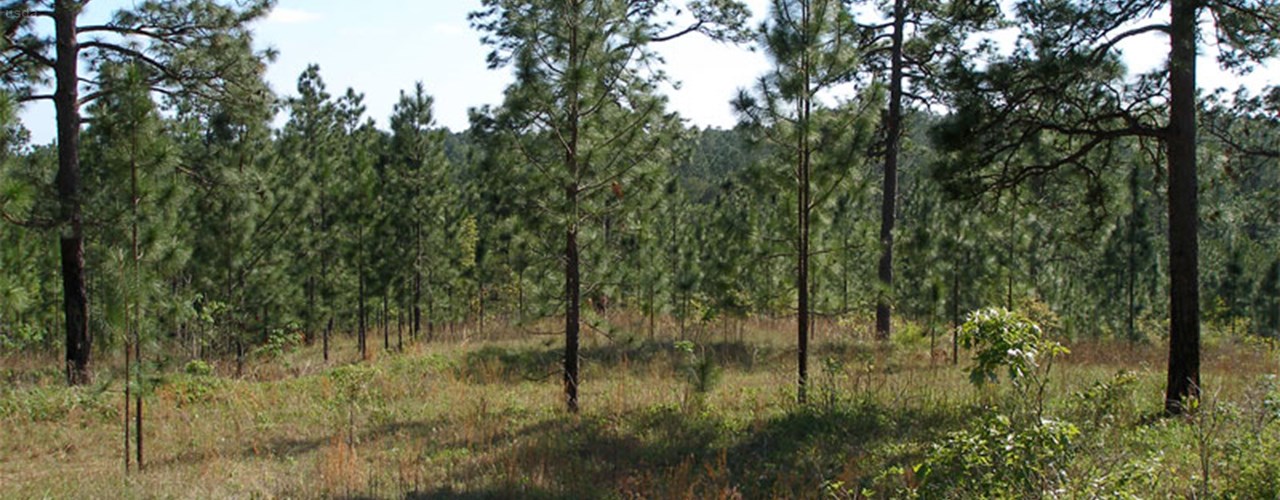Scientists search for rare snake in East Texas longleaf pine forests
While many people try to avoid snakes, a group of researchers are doing everything they can to find snakes, specifically the rare Louisiana pine snake.
The nonvenomous, 6-foot-long snake lives in gopher burrows, coming out only to go from one burrow to another or to mate. Its only habitat is the longleaf pine savannahs in eastern Texas and western Louisiana. But today, that habitat is almost gone, said Dr. Toby Hibbitts, a researcher at the Texas A&M Institute of Renewable Natural Resources (IRNR) and curator of amphibians and reptiles at the Biodiversity Research and Teaching Collections at Texas A&M.
Hibbitts is working with Dr. Wade Ryberg, another IRNR research scientist, and colleagues from the U.S. Department of Agriculture (USDA) Forest Service on the project.
“With the loss of habitat, populations are crashing in Texas and Louisiana,” Hibbitts said.
The snake’s numbers have never been that abundant, Hibbitts said. In fact, the snake was undiscovered until the 1920s.
“Most of the longleaf pine forest was cut beginning around the turn of the century, so the snake’s habitat was heavily affected before we even knew it existed,” he said. “Until the 1950s, fewer than 20 specimens were known.”
Hibbitts said after searching for and collecting the elusive snake over the last 20 years, researchers have only identified 250 specimens in Texas and Louisiana. Since 2006, just six Louisiana pine snakes have been found in Texas, with the last one found in 2008.
“So it has always been rare or at least really hard to find,” he said.
Because of its rarity, the snake has been under consideration for listing under the Endangered Species Act (ESA) by the U.S. Fish and Wildlife Service (FWS) for years. The federal agency must make a decision on the listing by 2017.
With funding from the Texas Comptroller of Public Accounts, Hibbitts, Ryberg and scientists from the forest service are studying the snake’s population, distribution and habitat on private land in Texas.
“The comptroller’s office wants to have the best information possible for the FWS to make a listing decision, so that is why it is funding this current research project,” Ryberg said.
The team designed a new model using information from IRNR’s Texas Land Trends database to identify potential habitat for the snake. In the past, Hibbitts said, models were based on soils because the snake prefers specific sandy soils. Their research model added older pine forests that haven’t been harvested recently as a variable.
“We looked at a series of aerial photos of a pine stand, and if it had ever been cut over the last 30 years, we excluded it as habitat,” he said. “We set up a map with blocks of forest that were older than 35 years, and that is what we considered potential habitat.”
They also narrowed the potential habitat by selecting larger continuous forested areas.
Once these potential habitat areas were determined, they began the second step of the project: determining the snake’s population on the private lands.
Beginning in March, the team set out 26 snake arrays on the identified areas within the private forests. The arrays consist of drift fences that funnel the snakes into certain areas and camera traps that take photos every 30 seconds for about 14 hours a day, producing about 30,000 images per month from each camera. The camera traps will stay in place until October.
If the camera captures an image of a snake, the researchers will go back to the site with a box trap to try to capture the snake, Hibbitts said.
If any snakes are captured, the researchers, with approval from the landowner, hope to give the snakes to one of several zoos that run a captive breeding program for the species.
Ryberg said zoos in Memphis, New Orleans, Lufkin and Fort Worth are among the zoos that operate the captive breeding program for the Louisiana pine snake. There are currently about 100 Louisiana pine snakes in zoos.
Every snake that has been found in Texas since 2006 has been captured and brought into one of the zoos involved in the captive breeding program, Hibbitts said. For four years, at one site, the captive breeding program has released about 40 juvenile pine snakes to reestablish the population and to look at efficacy of reintroduction.
“However, there are currently only three females in captivity in Texas, at the Ellen Trout Zoo in Lufkin,” Ryberg said.
The researchers have made recommendations for establishing a captive breeding and release program in Texas for Louisiana pine snakes.
Hibbitts said their recommendation is that the Texas snakes will need to be bred with Louisiana snakes to get a large enough population of captive snakes from Texas stock to start a reintroduction program in Texas habitats.
One question the project aims to answer is, if no snakes are found on these lands, does Texas even have any more Louisiana pine snakes?
“The answer is there probably are some snakes in USDA Forest Service property and there are places they could be reintroduced that are being maintained for longleaf pine forest and being managed for good habitat,” Hibbitts said.
Once the team completes its research on private lands in East Texas, it can estimate the amount of occupied habitat, Hibbitts said.
“Then, if the snake is listed under the ESA, landowners of private lands in Texas considered to be in unoccupied habitat will not be required by ESA regulations to modify any management practices for their land.”



